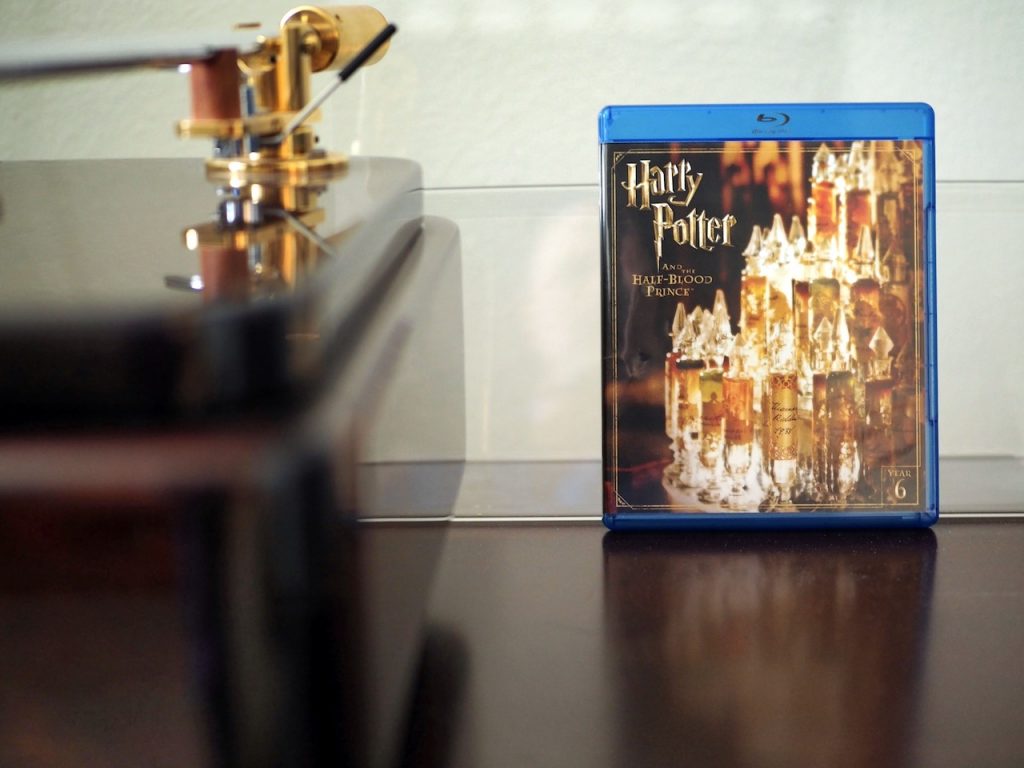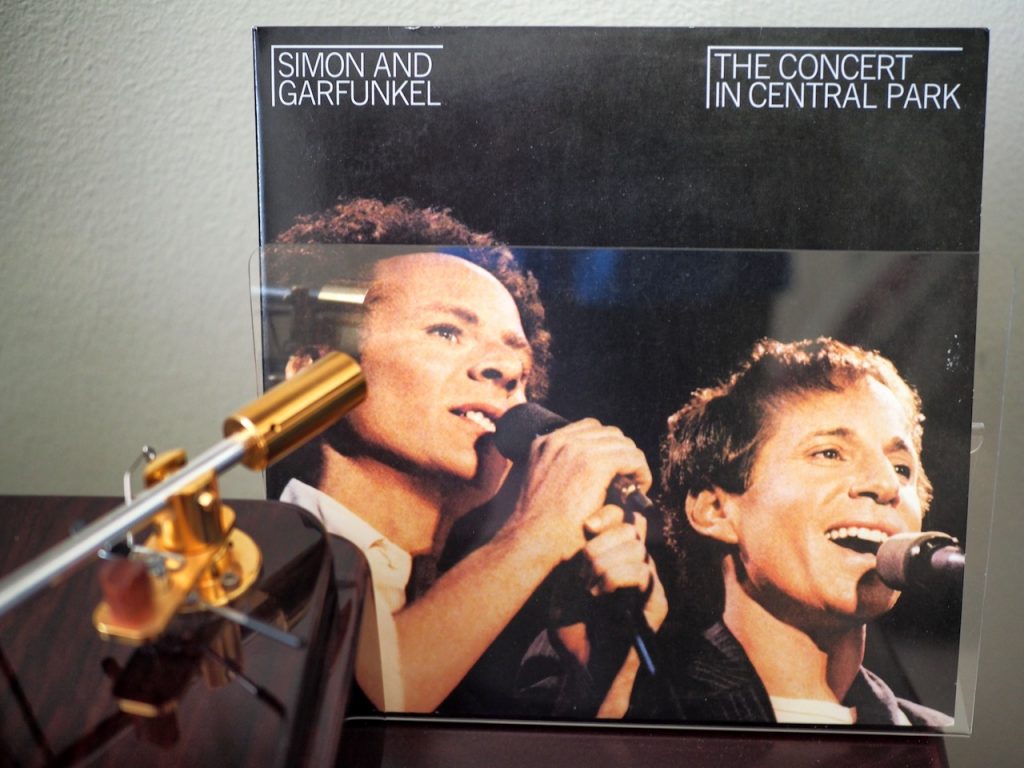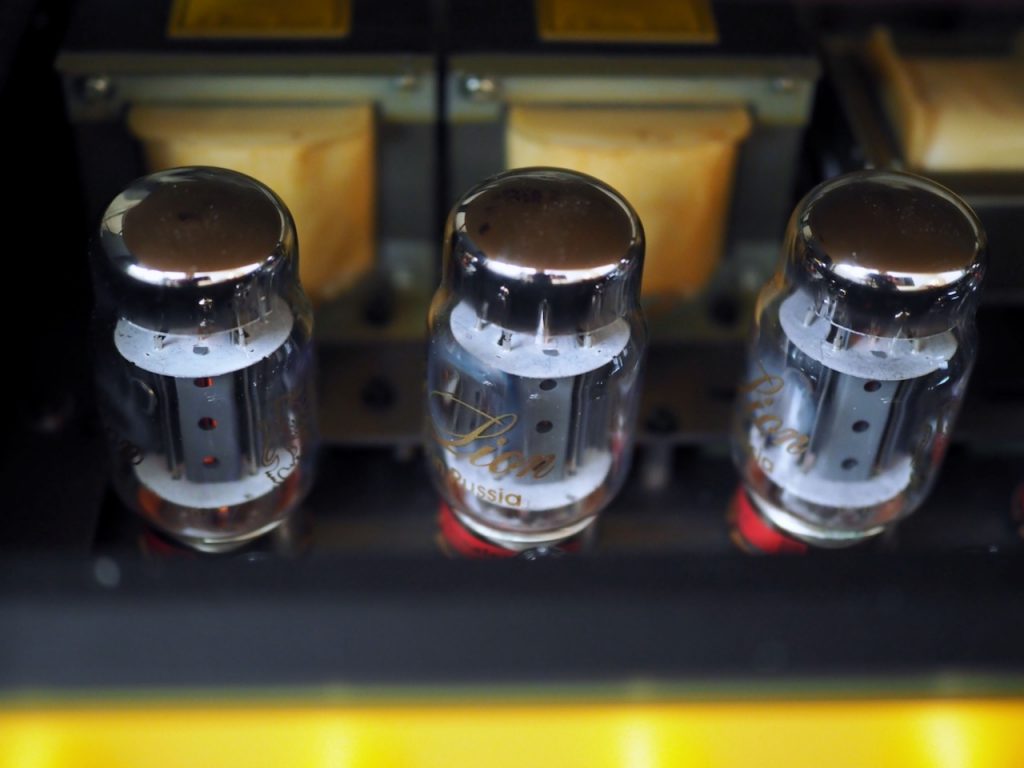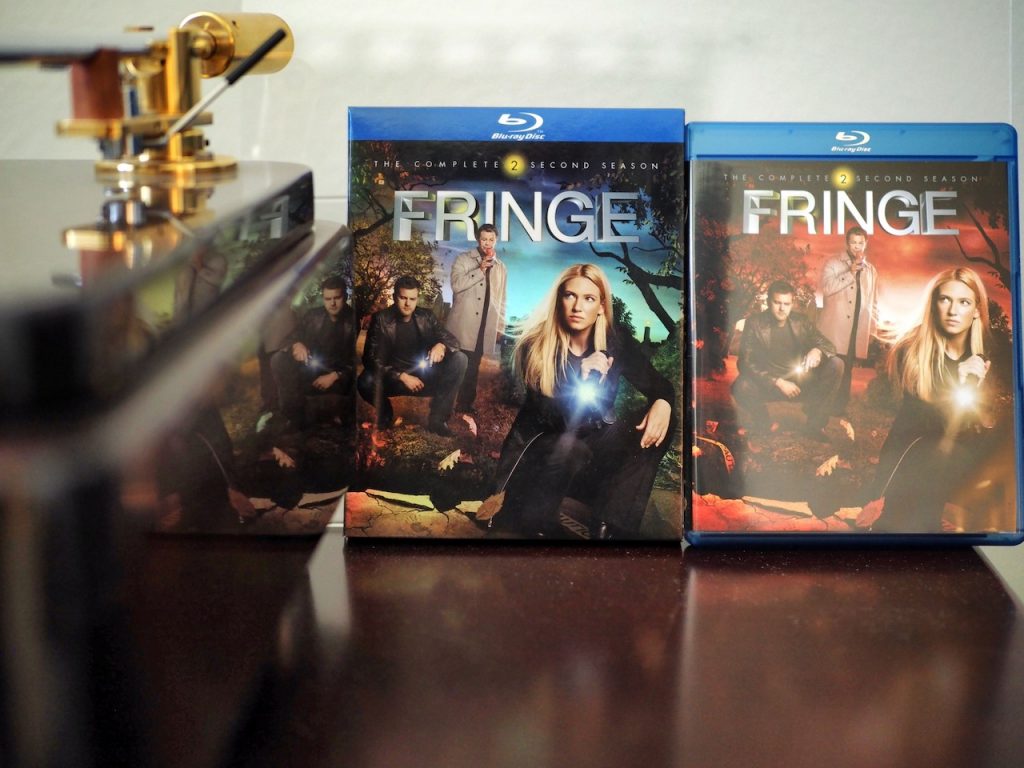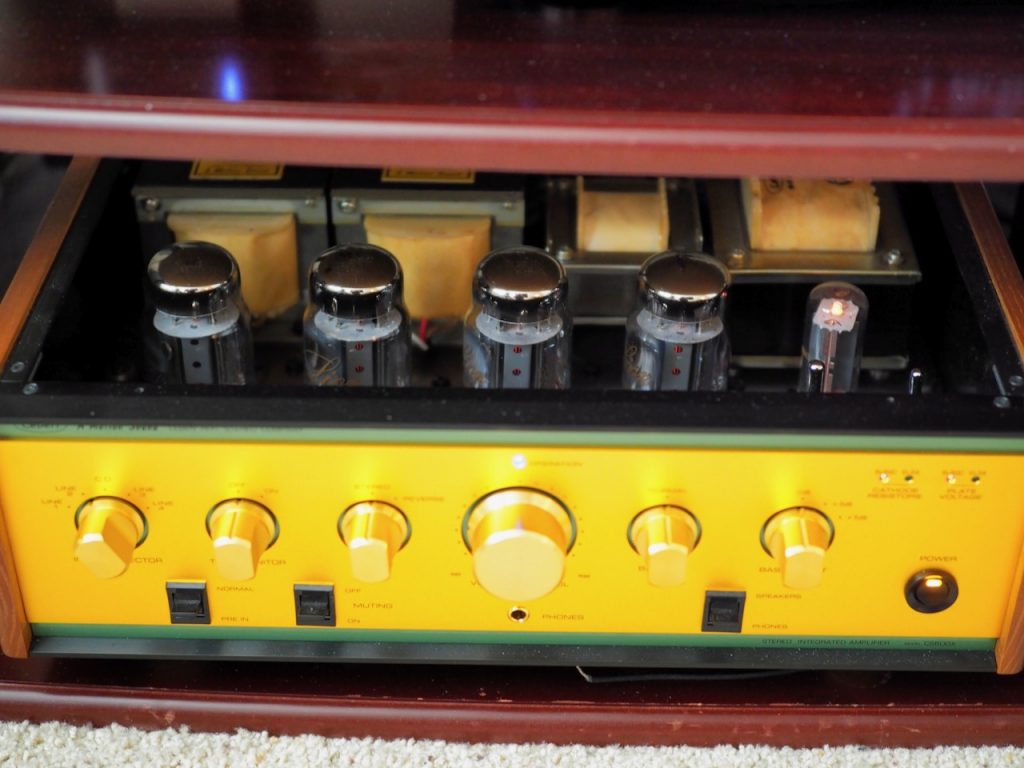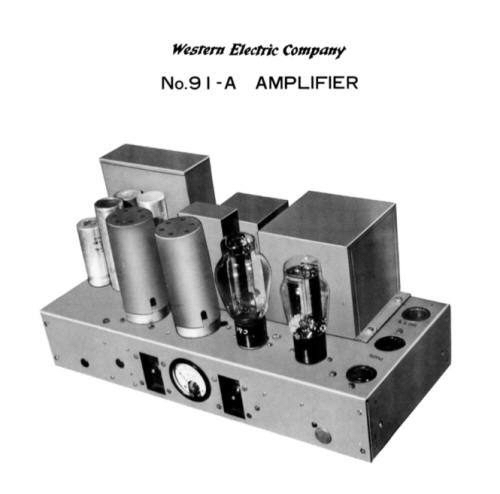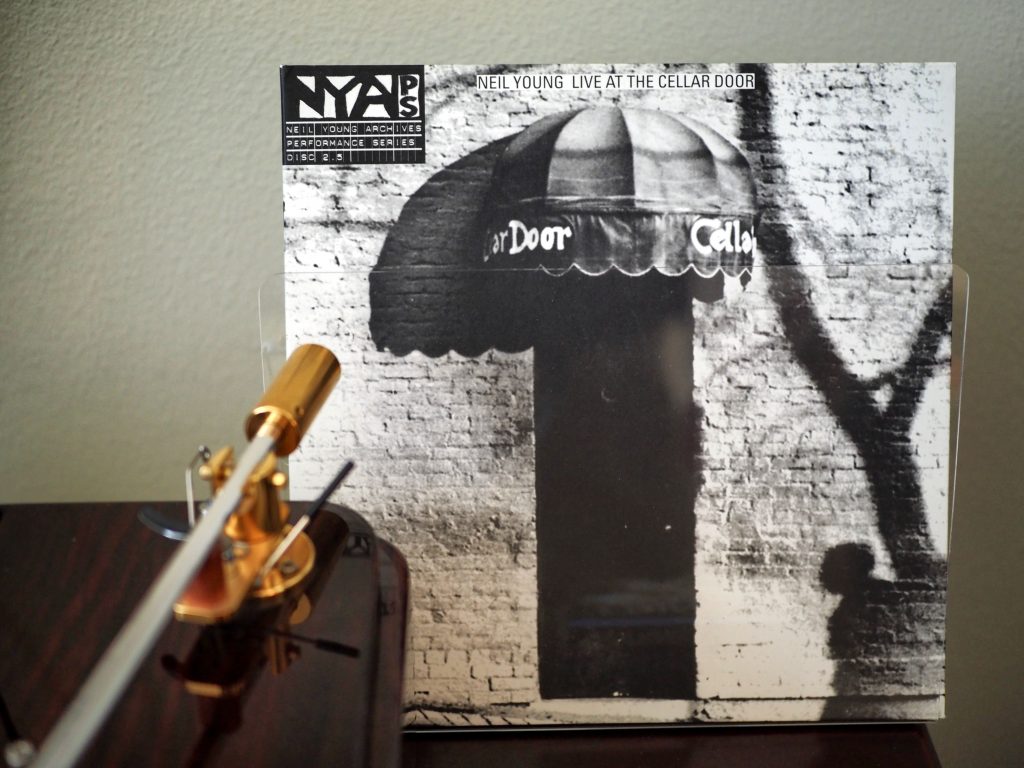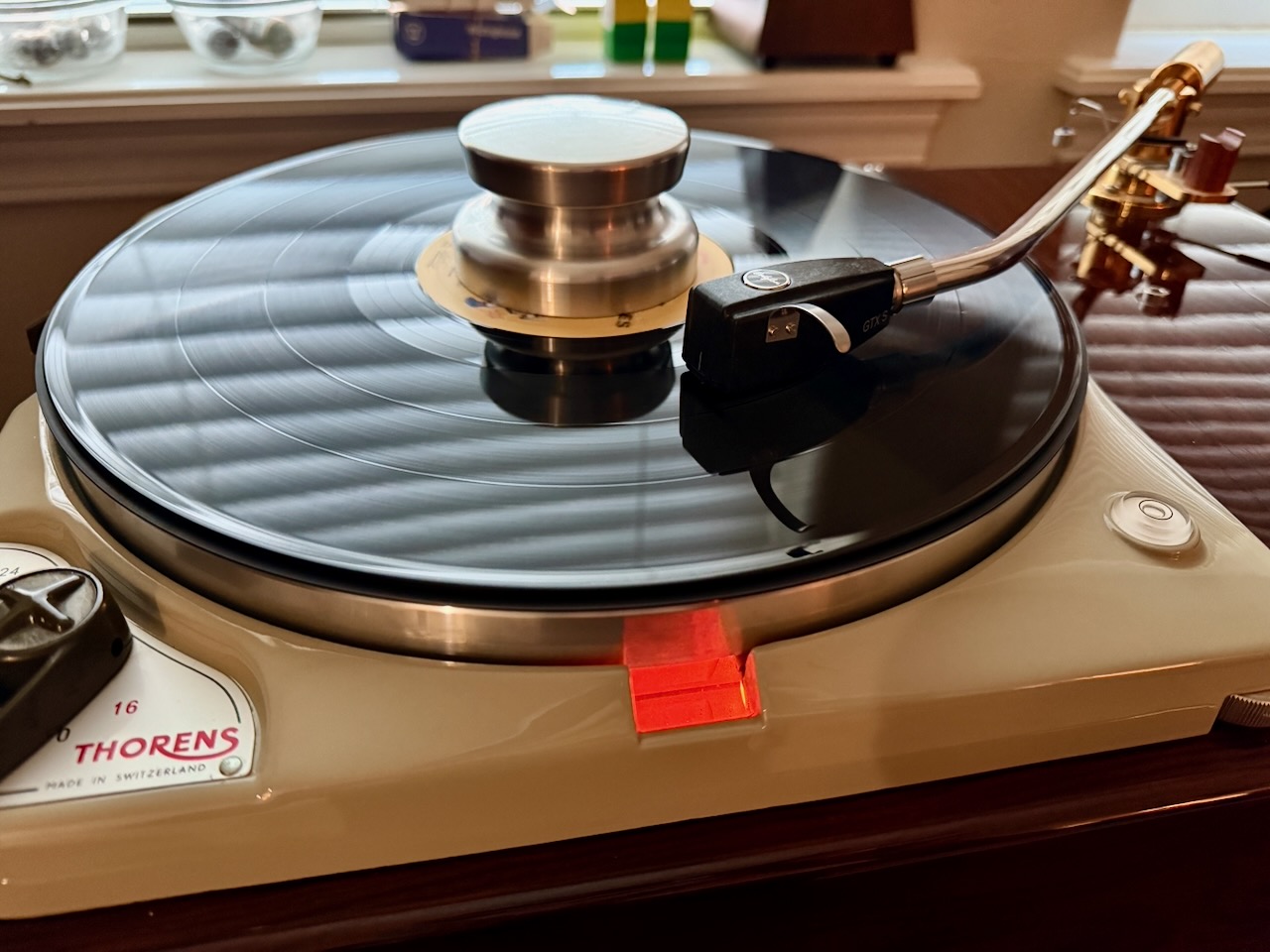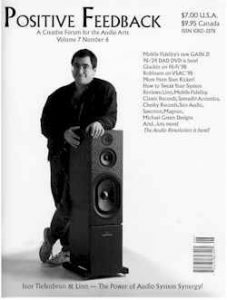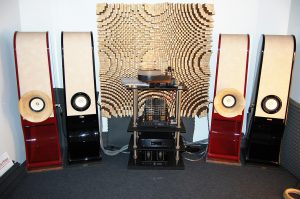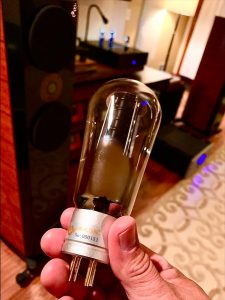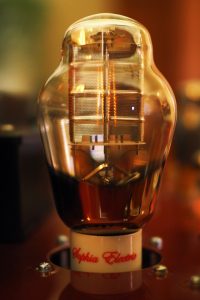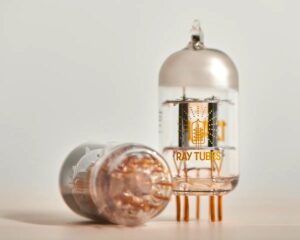Over the last week or so, I decided I wanted to re-watch all of my Harry Potter Blu-ray disc movies, in a continuous binge-style. Binge watching of television series and movies has become a popular way of dealing with the stay-at-home requirements related to the Covid-19 pandemic, and I thought it was about time for me to join in.
With the Sophia Electric EL34-ST vacuum tubes, those Blu-ray discs—like Harry Potter And The Half-Blood Prince—provided "a bubble of acoustic immersion" that encompassed my AV room, placing me into the movie experience, providing me a "you are there" feeling of being part of the movie, almost like I was a silent character participating in the movie as it unfolded, walking from scene to scene.
Would I be amiss in saying that the combination of the Leben CS-600X equipped with Sophia Electric EL34-ST vacuum tubes powering the Altec loudspeakers were "magic" while watching Harry Potter And The Half-Blood Prince?
Not at all, as the whole point of the Harry Potter movies is magic, and watching them with Sophia Electric EL34-ST vacuum tubes and that combination of equipment made magic seem like a completely believable phenomenon!
Imaging and soundstaging ability are particular strengths of the Sophia Electric EL34-ST vacuum tubes while watching movies like Harry Potter And The Half-Blood Prince, where all kinds of fascinating audio visuospatial information becomes apparent, with a fair amount of it being completely missed with the lesser EL34 vacuum tubes I have for comparison. There's more in the audio of those films than I thought, it was fun hearing it, and I found it added to my enjoyment while viewing the films.
Audio images with the Sophia Electric EL34-ST vacuum tubes had a vivid life-like tangible presence to them, with each little element of film foley, voices, or the accompanying music, having its own illuminated place within a wide, deep, and naturally tall soundstage, in a near holographic single-ended-triode fashion.
The same holds true with music, like with my Simon and Garfunkel LP set of The Concert in Central Park.
This live recording from September 1981 provides an immersive musical experience, and is an excellent example for talking about musicality.
When I think of Simon and Garfunkel, the first thing that comes to my mind is their superb vocal harmonies. The Sophia Electric EL34-ST vacuum tubes portray their harmonies beautifully, being smooth, rich, expressive, and with each of their contributions to the harmonies being easily audible.
Remember what I said about the Sophia Electric EL34-ST vacuum tubes dynamic sophistication? This allows the subtleties of the album's melodic lines to come to life and be beautifully expressive. The same is true for rhythm, where the dynamics of beat —along with their prowess in presenting different tempos—makes rhythms particularly engaging.
Timbral textures are believably realistic, and it was easy to hear the chordal variations resulting from adding additional pitches to three tone triads, and how those resulting shifts in tone color from the additional pitches affect the "emotional mood" of the music, which is of course one of the primary aspects of the use of tone color in music.
As I described with film, the Sophia Electric EL34-ST vacuum tubes cast a voluminous sense of space with The Concert in Central Park, and the soundstage was filled with an exciting presentation of visuospatial information associated with the many images of instruments and vocals in this particular album, and there's lots to hear, as the Sophia Electric EL34-ST vacuum tubes resolve a lot of meaningful musical nuance.
So, there you have it, the Sophia Electric EL34-ST vacuum tubes are a revelation in the Leben CS-600 and CS-600X compared to the stock EL34 tubes, or the NOS SED Winged C EL34 tubes I tried as a comparator.
If you have stock tubes in your Leben, you are not really hearing what it is capable of musically and sonically, as the stock output tubes limit the upper potential level of performance of the Leben integrated amplifiers significantly.
The Sophia Electric EL34-ST vacuum tubes remain my favorite EL34 vacuum tubes for my original Leben CS-600 by a country mile, but something rather interesting and unexpected happened when I switched to the new Sophia Electric KT88 vacuum tubes in the new Leben CS-600X.
Music and Film with the Sophia Electric KT88-ST
After Richard had described to me how the Sophia Electric KT88-ST used a lot of design cues from their 300B vacuum tubes, and sounded like a more powerful 300B vacuum tube than like a typical KT88, I was really keen to hear the Sophia Electric KT88-ST vacuum tubes in the Leben CS-600 and CS-600X integrated amplifiers.

This aspect of the Sophia Electric KT88-ST vacuum tubes is where this story really starts to get interesting, with a few surprises revealed, and I was intrigued to find out if the Sophia Electric KT88-ST vacuum tubes would lend a 300B type of overall sound to the Leben CS-600 and CS-600X integrated amplifiers.
Before we get rolling with more detailed observations about the Sophia Electric KT88-ST vacuum tubes performance, let me share with you some general listening observations related to the Leben CS-600 and CS-600X integrated amplifiers, and how the overall voicing of the Sophia Electric KT88-ST and EL34-ST vacuum tubes best complemented the unique voicing of those two integrated amplifiers.
As I mentioned earlier, the new Leben CS-600X has more of a classic rich, warm, and very slightly laid-back vacuum tube tonal balance due to the use of a new input vacuum tube complement (which I really like), whereas the original CS-600 has a more modern vacuum tube amplifier tonal balance that is more neutral and brightly lit in comparison.
What I found in swapping the various output tubes around in these two integrated amps, is that in the new CS-600X that I preferred KT88 tubes to any of the EL34 vacuum tubes I tried, whereas in my original CS-600 I preferred the Sophia Electric EL34-ST tubes hands down to any other vacuum tubes I have tried in it, including the new Sophia Electric KT88-ST.
The reason for those preferences is due to the differing tonal balance between the CS-600X and CS-600 integrated amplifiers, and how they were best complemented by the distinctive voicing of EL34 versus KT88 vacuum tubes.
The combinations of the CS-600 with EL34-ST tubes, and the CS-600X with the KT88-ST tubes, provided the greatest degree of musicality in my Altec 832A Corona loudspeakers-based system, as well as in my Altec A5 Voice of the Theatre loudspeakers-based AV system.
My aural impressions were that the various KT88 tubes I have tried in the original Leben CS-600 were a little too forward and brash in that circuit, which diminished its musicality, while the Sophia Electric EL34-ST vacuum tubes voicing provided a smooth, natural, articulate, and transparent presentation of the music that enhanced musicality, which I thought provided the perfect musical balance for my Altec loudspeaker-based systems.
The Sophia Electric EL34-ST is a no-brainer for the Leben CS-600, and quite easily outperformed every other set of EL34—or other—tubes I've tried in it over the years.
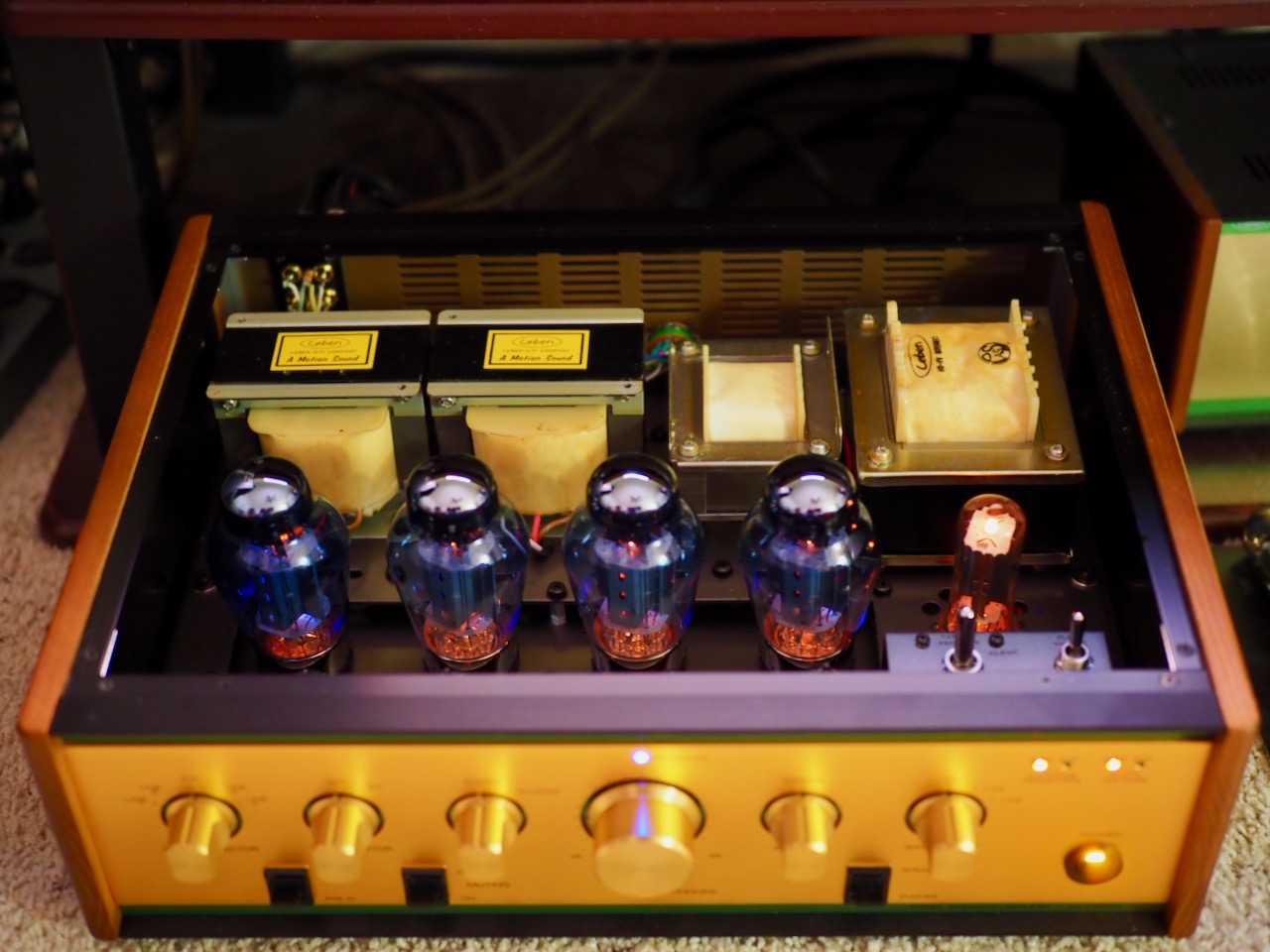
However, KT88 tubes in the new Leben CS-600X were a more complimentary match to its voicing (above), and one that enhanced musicality over any of the EL34s I have tried in it.
As a benchmark, I chose to compare the Sophia Electric KT88-ST to the highly regarded Russian re-issue of the Genalex Gold Lion KT88 by New Sensor Corp.
The going rate for a matched quad of the Gold Lion KT88s is generally between $240 and $250 USD from quality sellers, so they are about half the price of the least expensive option for the Sophia Electric KT88-STs.
Let me share with you my impressions of what I heard from the CS-600X fitted with Genalex Gold Lion KT88 vacuum tubes in my Altec A5 Voice of the Theatre loudspeakers-based AV system, while listening to movies and LPs, and then I'll compare them to the Sophia Electric KT88-ST vacuum tubes.
By the time I was ready to try the KT88s in the Leben CS-600X, my binge-watching had moved onto the science fiction television series Fringe on Blu-ray discs.
The Fringe series is about a fictional Fringe Division of the Federal Bureau of Investigation, based in Boston, Massachusetts. The Fringe team uses "fringe science" combined with FBI investigative techniques, to investigate unusual cases occurring on Earth that are mostly related to interactions from a linked parallel universe.
While watching Fringe on Blu-ray discs with my OPPO UDP-203 Blu-ray player, I thought the Gold Lion KT88 vacuum tubes in the CS-600X performed nicely, with a natural sounding presentation of the voices of characters Olivia Dunham (Anna Torv), Peter Bishop (Joshua Jackson), Walter Bishop (John Noble), Dr. William Bell (Leonard Nimoy), and the other characters in the series.
The visuospatial aspects of the audio from Fringe were not nearly as strongly emphasized with the Gold Lion KT88 vacuum tubes as they were with the Sophia Electric EL34-ST tubes. Auditory imaging was less vivid, the resolution of fine nuances was diminished, the resolution of dynamic gradations was diminished, soundstage was not as impressive in height, width, or depth, the 3D "bubble of acoustic immersion" in my listening room was basically gone, along with that feeling of being part of the events taking place in the story line.
Compared to the Sophia Electric EL34-ST tubes, the Gold Lion KT88 vacuum tubes are kind of veiled and two-dimensional sounding in their presentation, compared to the immersive and vivid three-dimensional presentation of the Sophia Electric EL34-ST tubes in the Leben CS-600X.
While the Gold Lion KT88 vacuum tubes were not even close to being in the same visuospatial league as the Sophia Electric EL34-ST tubes, I did like their smooth, rich, and somewhat darker presentation in the Leben CS-600X, and actually preferred the Gold Lion KT88s overall to any of EL34 tubes in the CS-600X.
That only applies to the Leben CS-600X, however, as the Sophia Electric EL34-ST tubes absolutely crushed all challengers in my original Leben CS-600, where the Gold Lion KT88 vacuum tubes didn't even come close in overall performance, either musically or sonically.
I know, I'm supposed to be comparing the Gold Lion KT88 vacuum tubes to the Sophia Electric KT88-ST vacuum tubes, and I will do that in a moment, but I wanted to make a point about how the different voicings of the new Leben CS-600X versus the original Leben CS-600 matters as to which vacuum tubes I liked best in them, so I thought I should mention it.
While the Sophia Electric EL34-ST vacuum tubes sound truly impressive in visuospatial terms in the new Leben CS-600X, the KT88 family of vacuum tubes are just a more complementary match to the new CS-600X's overall voicing, as there is a "tonal synergy" that the KT88 tubes bring to the CS-600X that really enhances the listening experience.
I swapped out the Gold Lion KT88 vacuum tubes in the CS-600X with the Sophia Electric KT88-ST vacuum tubes, and it took me all of about two seconds to hear that the Sophia Electric KT88-ST vacuum tubes possess all of the three-dimensional visuospatial prowess of their Sophia Electric EL34-ST kin, along with the smooth, rich, warm presentation of the Gold Lion KT88 vacuum tubes.
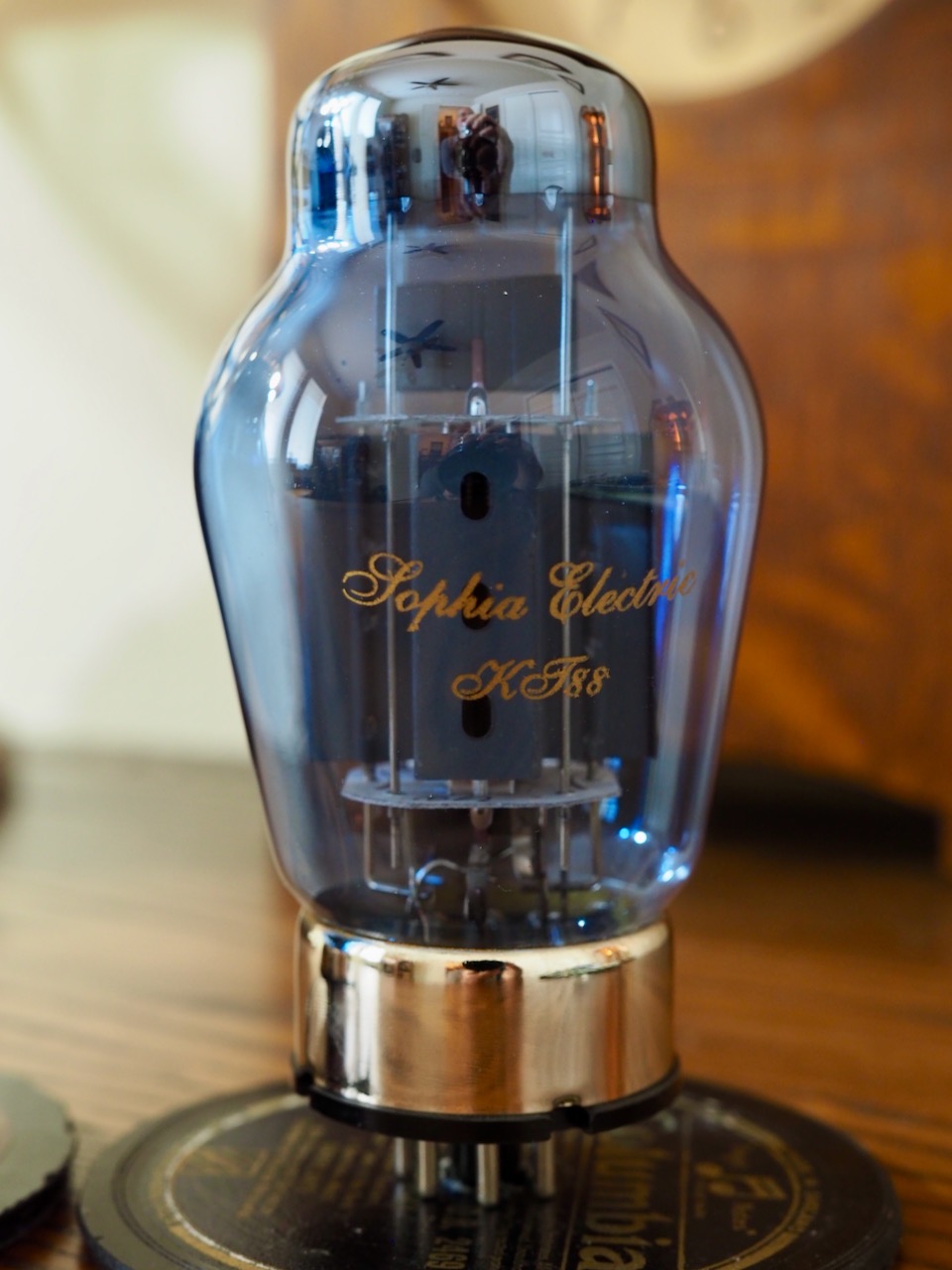
With Sophia Electric KT88-ST vacuum tubes, the auditory imaging was much more vivid, the resolution of fine nuances was restored to the level of the EL-34-ST vacuum tubes, with the resolution of dynamic gradations being in the same league as the EL34-STs, and the soundstage in height, width, or depth were back to the impressive standard set by the Sophia Electric EL34-ST tubes.
Perhaps most importantly, the 3D "bubble of acoustic immersion" in my listening room was back, and was even more impressive than that of the EL34-ST, and once again I had that feeling of being part of the events taking place in the story line, instead of the feeling I was just watching as an outside observer, as with the Gold Lion KT88 vacuum tubes.
In terms of the Sophia Electric KT88-ST vacuum tubes sounding like the Sophia Electric 300B vacuum tubes I have listened to in the past, I don't have a 300B amplifier to compare the KT88-STs with at the moment, but I do have a 300B integrated amplifier scheduled for review later in 2020, or early in 2021, so perhaps I can provide some more detailed follow-up on that point in the future at Jeff's Place.
I've owned single-ended-triode (SET) amplifiers based on 45, 2A3, 300B, and 845 vacuum tubes in the past, so I am quite familiar with their overall performance and sound qualities, and I wished I still had them, as they would nicely complement my highly sensitive vintage Altec loudspeakers.
Based on past recollections, I would say Richard's assertion that the Sophia Electric KT88-ST vacuum tubes overall performance has a musical & sonic resemblance to the Sophia Electric 300B vacuum tubes is quite reasonable, but the specifics of that KT88-ST to 300B comparison will have to wait until I have a 300B amplifier on hand to compare directly with.
Most of you probably know that in the early days of cinema, the combination of Altec A5 Voice of the Theater loudspeakers paired with Western Electric 91A 300B amplifiers (above), was a typical choice for small to medium sized movie theaters.
After hearing my Altec A5 Voice of the Theater loudspeakers combined with the Leben CS-600X fitted with the 300B-like Sophia Electric KT88-ST vacuum tubes, it is easy to understand why that A5-300B combination was so revered in movie theaters.
Movies and television series came to life before my ears in a vivid and engaging fashion as I watched and listened with the Sophia Electric KT88-ST vacuum tubes in the CS-600X.
With the KT88-STs I was once again in a 3D "bubble of acoustic immersion", that made me feel like I was part of the story line in movies and television, instead of just merely watching, which is an altogether significant accomplishment. This aspect of their performance was unique in my experience in this audio system.
To be fair, the Gold Lion KT88 vacuum tubes are nice sounding KT88s, and I like them a lot. However, comparing them to Sophia Electric KT88-ST vacuum tubes is like comparing a 1956 Norton Model 50 motorbike to a 2020 Kawasaki World Superbike Racing Team Kawasaki ZX-10RR. The Norton was a lovely motorbike for its day, but the Kawasaki is in a different world in pure performance terms. So it is with the Gold Lion KT88 vacuum tubes compared to the Sophia Electric KT88-ST vacuum tubes, the KT88-STs are just in a different world of performance.
Now let's move on to some LP listening experiences with the Sophia Electric KT88-ST vacuum tubes.
Neil Young has such a large body of superb music that it is hard to single out favorites, but if I were exiled to a deserted island and could only take one Neil Young LP with me, it might very well be Live At The Cellar Door (above), recorded live in November-December of 1970 at the Cellar Door venue in Washington, D.C.
As with film audio, the Sophia Electric KT88-ST vacuum tubes displayed a lot of sophistication with dynamic gradations in Live At The Cellar Door, allowing larger dynamics of beat to be felt on my body, as well as heard, and melody lines became realistically live-like due to the KT88-STs rather remarkable resolution of dynamic gradations at softer levels. The dynamic sophistication of the Sophia Electric KT88-ST vacuum tubes was very impressive, and gave me greater appreciation for the importance of their ability to easily resolve dynamic gradations from soft to loud across the dynamic spectrum.
The resolution of fine nuance with the Sophia Electric KT88-ST vacuum tubes is also impressive, easily revealing the decay of the beautiful overtones of the nine-foot Steinway Neil played for those performances, while also easily conveying the overall timbre of Neil's Martin D-45 in believable fashion, for example.
You would expect the same level visuospatial performance from the Sophia Electric KT88-ST vacuum tubes related to imaging, soundstage, and the sense of acoustic space in a recording, as with film, and that was the case.




